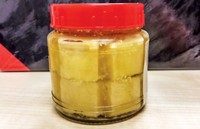Advertisement
Grab your lab coat. Let's get started
Welcome!
Welcome!
Create an account below to get 6 C&EN articles per month, receive newsletters and more - all free.
It seems this is your first time logging in online. Please enter the following information to continue.
As an ACS member you automatically get access to this site. All we need is few more details to create your reading experience.
Not you? Sign in with a different account.
Not you? Sign in with a different account.
ERROR 1
ERROR 1
ERROR 2
ERROR 2
ERROR 2
ERROR 2
ERROR 2
Password and Confirm password must match.
If you have an ACS member number, please enter it here so we can link this account to your membership. (optional)
ERROR 2
ACS values your privacy. By submitting your information, you are gaining access to C&EN and subscribing to our weekly newsletter. We use the information you provide to make your reading experience better, and we will never sell your data to third party members.
Synthesis
Nylon, Personal Care Chocolate, Flavor Enhancers and Taste Modulators
by Stephen K. Ritter
August 29, 2005
| A version of this story appeared in
Volume 83, Issue 35
What is the origin of the name nylon? That's an interesting question answered recently by William B. Jensen, a professor of the history of chemistry and chemical education at the University of Cincinnati (J. Chem. Educ. 2005, 82, 676). Jensen pens a regular column called "Ask the Historian."
Many contenders for the name of the polyamide were bounced around, Jensen reports. But it comes as a disappointment that its name is "totally devoid of both chemical and historical significance and was selected, not by the chemists involved in its synthesis, but by the managers and executives at DuPont," he writes.
That hasn't stopped wordsmiths from promoting various theories, however. For example, visitors to the New York World's Fair in 1939, where nylon was introduced to the public in the form of ladies' hosiery, thought it was named after the fair's Trylon tower. Others thought it might be a contraction of New York and London.
It's hard to miss that many DuPont products have similar-sounding "on" names. For example, other polymers include rayon (1924) and the trademarked Teflon (1938), Orlon (1941), and Dacron (1950). Even Freon (1930), the class of refrigerants, is an "on" product. But the connection between the "ons" appears to be coincidental.
Chocolate is not just for eating anymore; it's also good for the outside of your body. Chocolate is becoming a popular ingredient in "personal-pampering products" such as skin creams, shampoos and conditioners, bath scents, and scented candles. Some research suggests that chocolate contains chemicals that can stimulate the release of endorphins and create feelings of euphoria when smelled.
"Scents and textures in personal care products can often provide the chocolate satisfaction without the guilt of consuming the calories," noted Myriam Delvaux, skin care segment leader at Dow Corning, in a recent company press release.
Dow Corning's first product along these lines, Chocolate Delight, was introduced in 2004. It's a fluffy face care formulation with the texture, aroma, and color of chocolate mousse. Another product under development is CocoaSlim, a cream that leaves the skin "silky smooth with a pleasant cocoa scent."
"These are examples of how our silicone materials can be used for very creative, innovative, and trendy skin care formulations," Delvaux said.
Perhaps adding chocolate to these products isn't as novel as it sounds. Cocoa butter, the fat that is derived from cocoa beans and by default is in chocolate, has been used in skin care products for some time, albeit maybe not generating the same levels of euphoria.
Biotechnology company Senomyx, la Jolla, Calif., aims to make its mark on the food and beverage industry by introducing new ingredients that trick taste buds into sensing sugar, salt, and other flavors that aren't really there. These ingredients could provide significant health benefits by greatly reducing the amount of sugar and salt needed in foods.
The company has developed assay methods for high-throughput screening of hundreds of thousands of compounds for their ability to bind to human taste receptors and replicate savory (monosodium glutamate, or MSG), sugar, salt, and bitter tastes. The best candidates currently are being developed and tested against food industry safety standards. A replacement for MSG could be on the market in the first half of 2006, while the replacements for sugar and salt might be ready in 2007; a bitter replacement will take longer to develop.
The compounds reportedly can be added to food at less than 1 ppm and should be effective enough to reduce the amount of sugar or salt in a food or beverage by about one-third. Senomyx has attracted the attention of Coca-Cola, Kraft Foods, Nestlé, Campbell Soup, and Cadberry Schweppes, which already have exclusive rights to some of the compounds.
This week's column was written by




Join the conversation
Contact the reporter
Submit a Letter to the Editor for publication
Engage with us on Twitter